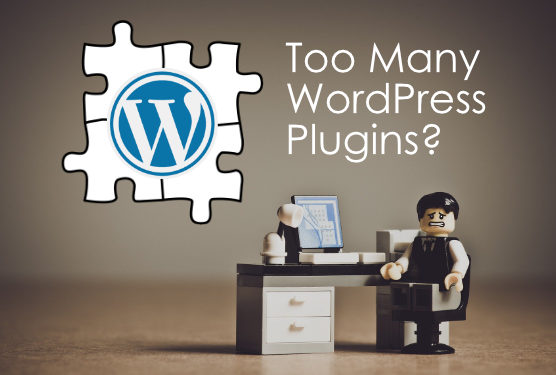
Did you know?
- WordPress.org offers over 50,000 plugins and over 3,500 GPL-licensed themes.
- The WordPress plugins have been downloaded over 1.5 billion times.
- 1,250,000,000+ total plugin downloads have happened on WordPress.org so far.
- With 82+ million total downloads Akismet is the most popular plugin of all time.
If you have a WordPress website then chances are, you have a few plugins included in your site’s design. And, as the stats above indicate, you are not alone. After all, they play a significant role in the safety and usability of a website. They can be uploaded to your website easily and gives your site functionality that can take developers a significant amount of time to create on their own.
Advantages of WordPress Plugins

- They can save time. With more than 50,000 plugins available in the WP plugin library it is likely there is a plugin for every function you need your website to perform. There is no reason to re-invent the wheel!
- They provide flexibility as many plugins allow you to customize how they will be used.
- They are reliable. Plugins are designed and managed by trustworthy companies who regularly update and improve them.
- They are budget-friendly. Most plugins cost less than $100, and many of them offer free versions for the basic functionality. Paying a web developer to craft something specific to your needs can be expensive.
- They are easy to remove, should you no longer need them.
Results of Excessive WordPress Plugin Use
As great as WordPress plugins are, it’s is possible to have too much of a good thing. Here are a few risks that can come with too many plugins.
Having too many plugins can actually inhibit site functionality and cause it to crash.
With even the most popular WordPress plugins there can be issues. This is because WordPress is an open-source project thus allowing other people to use, change, and share all the WP software. Consequently, plugin codes can be tweaked by someone who doesn’t have a full understanding of coding. Or worse, by someone who does and uses that knowledge maliciously.
They can conflict with each other due to compatibility issues.
If you update your website often, then you know that compatibility between your WordPress themes, key files and plugins is important. One plugin’s coding can override another, thus rendering them both ineffective. If one element of your site is incompatible with another then it can slow your site down or cause it to totally quit. The more plugins you have on your site the greater the risk of having some that will conflict with each other.

Having an excess of WordPress plugins can slow your website down significantly. And, when you acknowledge that 40% of site guests will leave a site if it takes more than 3 seconds to load, you want to do all you can to ensure your site loads quickly. After all, your SEO is negatively affected by slow page load speeds, and you don’t want to lose SERP ranking due to excessive plugins!
Every plugin you add to your website means more code that is added to the browser. The more code there is the slower your site will be. If you are uncertain as to the speed of your website, you can check it with a tool such as Pingdom or GTmetrix. Keep in mind that neither tool can tell you which plugins are causing slow speeds. For this, you can use this tool from GoDaddy, the P3 (Plugin Performance Profiler), which will measure the impact of your site’s plugins.
They can leave your site vulnerable to attack.
By design, WordPress is very secure and has no intrinsic vulnerabilities, so long as you keep the files up to date. After all, if your website is not secure, then all your time and work spent in setting it up is wasted. Sadly, there has been a 32% increase in website hacking in the past several years. Correlating to this stat is that 54% of all vulnerabilities in WordPress is due to plugins. When you have an abundance of plugins you risk being hacked, as each one can add a hole in the security of your website. Hence, more plugins equal more vulnerability.
More so, if you have out of date plugins your site is at a higher risk. In fact, a study by Sucuri found that 25% of all site hacks are due to these out of date plugins – RevSlider, Gravity Forms, and TimThumb. However, just because a plugin is up to date, it doesn’t mean your site is 100% safe. An example of this is the Divi Builder by Elegant Themes. In a security audit, this popular page building plugin was discovered to allow users roles to perform PHP functions, that allowed sites (more 600,000 of them!) to be exploited by hackers. Fortunately, Elegant Themes discovered the problem early on and took steps to resolve the matter and advised the user to update the plugin.
However, while these are valid issues, they are not reasons to eschew plugins altogether. Rather it means using careful consideration before installing multiple plugins to your website.
Choosing WordPress Plugins
Ideally, it is best to talk with your web developer about the needs you have for your website. This will help them determine which plugins will be best for your site. Because they have experience in website development, they will know what plugins can be trusted and which ones to avoid using. But, should you be doing the website design yourself, and thus selecting your own plugins, then it is important that you use this approach to selecting plugins.
Take time to fully research the plugin(s).
- Find out how many installs the plugin has. If it has existed a while but has no recent installs this can be a cause for concern.
- What type of reviews are there about the plugin? Obviously, avoid those plugins with numerous negative reviews.
- When was the last time the plugin was updated? The more recent, the better.
- Does it have unanswered questions from months/years ago? If the developer hasn’t answered questions recently, then that plugin is likely out of date and should be avoided.
Know the cost.
While there are many plugins that are free to use, this is not the case with all of them. The Page Progressive team has found that many other agencies purchase WordPress themes from placed like themeforest.net, and those themes come bundled with several additional plugins. Often those plugins do not include an actual license for that plugin and people don’t realize you have to pay extra for that to get updates for them moving forward.
Look for five-star plugins.
Plugins, like many other purchases we make, are ranked with a 5-star review system. A good review indicates that a plugin will work as expected, is updated regularly, has a great support team, and is typically compatible with other plugins. Be sure to read the reviews before deciding to install a specific plugin as this can save you a great deal of trouble in the future. And, if you still have questions about the plugin, just ask. Any trustworthy plugin company or developer will take the time to answer all your questions.
Shop Wisely.
While there are multiple sites out there where you can find/purchase WordPress plugins, it is best to only purchase them from the WordPress.org repository. Plugins found here have all been vetted and approved by WordPress developers, so you don’t have to be as wary of hackers.
Keep a list of the plugins that you know will not be a good fit for your website.
This can help you avoid future issues. Your website developer can often provide a list of plugins that are known to be problematic or a security risk. It’s very possible some of those plugins bundled with the theme you don’t even need.
Other times you run into what our team likes to call “Plugin Creep.” You start with a website that was intended to do ABC, but over time, you decide to try D, or E or F….and each time you add a few more plugins to add those features. Some of them you never use but you leave them activated anyway.
A couple of years later you find out that your website is running slow. Your hosting provider says “You are running 75 plugins, and it’s eating up all your hosting plan resources”. But at that point, you don’t remember which plugins you need or what they do.
We recommend when you launch a new website, that you incorporate as much functionality as possible. This allows it to be accounted for by your developer and perhaps even coded into your theme rather than using a plugin.
Managing Your WordPress Plugins

Upgrade often. You want to always have the latest version of PHP on your WordPress site. Failing to do this makes your site more vulnerable to hackers and more prone to other site-related problems. In addition to minimizing vulnerabilities, updating to the latest version of PHP will help you locate plugins and determine which ones you need or those which have not been recently updated. This is because, in order to add an updated version of PHP, compatibility testing will be done. If a plugin doesn’t work with a particular plugin, it is a good indicator that the plugin needs to be either updated or that perhaps that plugin is no longer being maintained by the developer.
Remove inactive plugins. You don’t want to make your website an easy target. Removing a plugin that is no longer benefitting you or is no longer supported by their developers minimizes the risk of your site being hacked. You can delete unnecessary plugins by going to your site’s admin dashboard and deleting them.
Understand what a specific plugin does. With so many plugins to choose from, it should be no surprise that there are multiple plugins that accomplish the same (or nearly the same) tasks. For example, RankMath and Yoast both provide the same SEO information, so there is no reason to have them both.
Conclusion
Sure, there are many reasons for using WordPress plugins – and our goal is not to discourage their use. Rather, it is to encourage you to assess your plugins usage. Like many other things in life, WordPress plugins can fall under the realm of ‘just because you can, it doesn’t mean you should’ category. Yes, there are many advantages of using WordPress plugins, but there does come a point where enough is enough. “What is that number?” you ask. We can’t really give you a definitive number – though the max for many websites is around 20. At that point, you should talk to your developer about the possibility of reworking the website to reduce plugin usage.
If you find that you aren’t certain why you have a particular plugin, can’t see where it is helping you, or think that your website is being slowed down due to an abundance of WordPress plugins then reach out to our WordPress website development team. We would would be happy to help you determine how to make your website as effective and efficient as possible. Contact us today if you have questions or need help!
